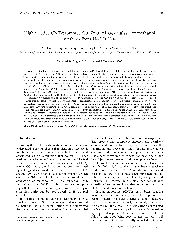摘要
With types of in-house-synthesized multi-walled carbon nanotubes (CNTs) and the nitrates of the corresponding metallic components, highly active CNT-promoted CuZnOAl2O3 catalysts, symbolized as CuiZnjAlk-x%CNTs, were prepared by the co-precipitation method. Their catalytic performance for methanol synthesis from H-2/CO/CO2 was studied and compared with the corresponding CNT-free coprecipitated catalyst, CuiZnjAlk. It was shown experimentally that appropriate incorporation of a minor amount of the CNTs into the CuiZnjAlk could significantly increase the catalyst activity for methanol synthesis. Under the reaction conditions of 493 K, 5.0 MPa, H-2 = CO/CO2/N-2 = 62/30/5/3 (v/v), GHSV = 8000 h 1, the observed CO conversion and methanol formation rate over a co-precipitated catalyst of Cu6Zn3Al1-12.5% CNTs reached 36.8% and 0.291 mol CH3OH s(-1) (m(2)-surf. Cu)(-1), which was about 44 and 25% higher than those (25.5% and 0.233 mol CH3OH s(-1) (m(2)- surf. Cu)(-1)) over the corresponding CNT-free co-precipitated catalyst, Cu6Zn3Al1. Addition of a minor amount (10-15 wt%) of the CNTs to the Cu6Zn3Al1 catalyst was found to considerably increase specific surface area, especially Cu surface area of the catalyst. H-2-TPD measurements revealed that the CNTs and the pre-reduced CNT-promoted catalyst systems could reversibly adsorb and store a considerably greater amount of hydrogen under atmospheric pressure at temperatures ranging from room temperature to similar to573 K. This unique feature would be beneficial for generating microenvironments with higher stationary-state concentration of active hydrogen adspecies on the surface of the functioning catalyst, especially at the interphasial active sites since the highly conductive CNTs might promote hydrogen spillover from the Cu sites to the Cu/Zn interphasial active sites, and thus be favorable for increasing the rate of the CO hydrogenation reactions. Alternatively, the operation temperature for methanol synthesis over the CNT-promoted catalysts can be 15-20 degrees lower than that over the corresponding CNT- free contrast system. This would contribute considerably to an increase in equilibrium CO conversion and CH3OH yield. The results of the present work indicated that the CNTs could serve as an excellent promoter.
- 出版日期2003-2
- 单位厦门大学
